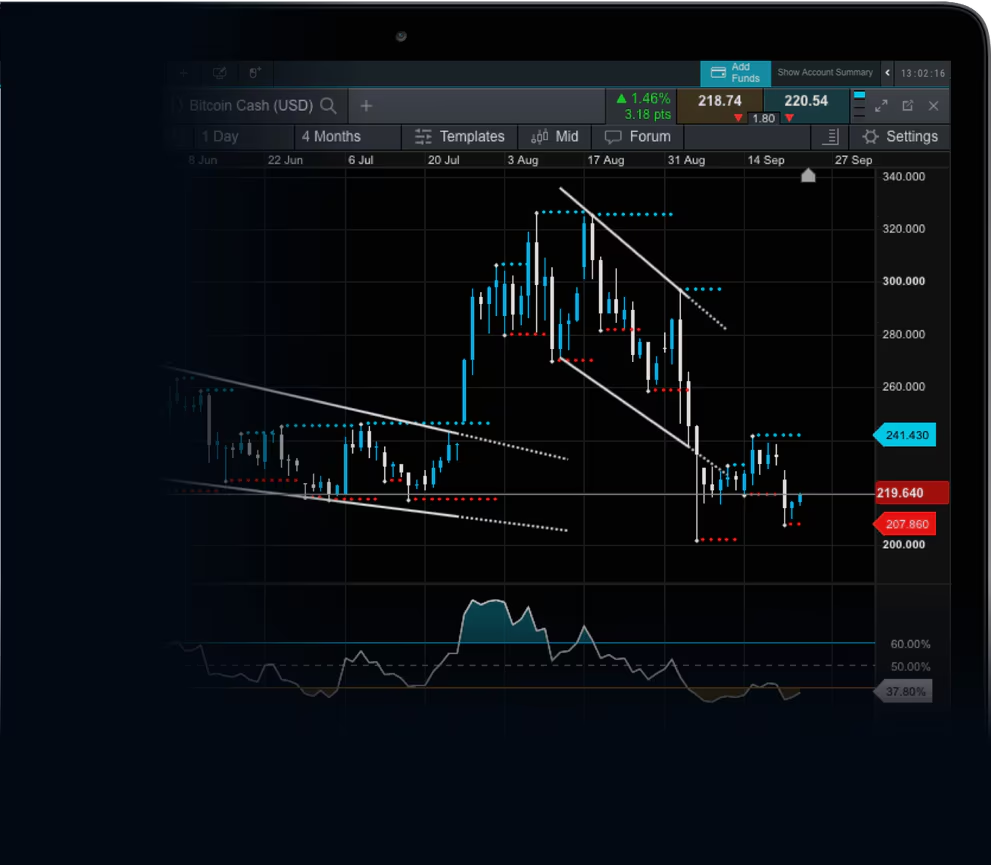Bitcoin, the first and most well-known cryptocurrency, has had a volatile price history since its inception in 2009. Over the years, there have been several significant moments in bitcoin’s price journey, with periods of rapid growth followed by steep declines. In this article, we will take a closer look at when bitcoin reached its lowest points in history and explore the factors that contributed to these price drops.
One of the most notable instances of bitcoin reaching its lowest point was in early 2015. After experiencing a surge in price to over $1,000 in late 2013, bitcoin faced a significant correction that lasted for several months. In January 2015, the price of bitcoin bottomed out at around $200, marking a substantial decrease from its previous highs. This period of decline was attributed to a number of factors, including increased regulatory scrutiny and the collapse of prominent bitcoin exchange Mt. Gox.
Another significant drop in bitcoin’s price occurred in late 2018 during the infamous “crypto winter.” After reaching an all-time high of nearly $20,000 in December 2017, bitcoin experienced a prolonged bear market that lasted throughout 2018. The price of bitcoin reached its lowest point of the year in December 2018, dipping below $3,200. This period of decline was accompanied by a general market downturn, increased regulatory uncertainty, and negative sentiment towards cryptocurrencies.
It is important to note that while bitcoin has experienced significant price drops in the past, it has also demonstrated resilience and the ability to recover. After reaching its lowest points, bitcoin has historically gone on to experience periods of renewed growth and increased adoption. Understanding the history of bitcoin’s price and the factors that influenced its lowest points can provide valuable insights for both investors and enthusiasts alike.
The Early Days of Bitcoin
Bitcoin, the first cryptocurrency, was created by an unknown person or group of people using the pseudonym Satoshi Nakamoto in 2009. The early days of bitcoin were marked by curiosity and experimentation, as this new digital currency was unlike anything that had been seen before.
In the beginning, bitcoin had very little value. It was difficult to buy or sell bitcoin, and there were only a small number of people who even knew about it. The first recorded transaction involving bitcoin took place in May 2010, when a user named Laszlo Hanyecz paid 10,000 bitcoins for two pizzas. This event is now celebrated as Bitcoin Pizza Day.
The early adopters of bitcoin saw its potential and actively participated in its development and promotion. They set up online communities and started spreading the word about this revolutionary technology. As more people learned about bitcoin, its value slowly started to increase.
However, the early days of bitcoin were not without their challenges. Bitcoin faced skepticism and criticism from traditional financial institutions and governmental authorities. Many skeptics argued that bitcoin was just a passing fad or even a dangerous form of currency that could be used for illegal activities.
Despite the skepticism, bitcoin continued to gain traction and attract more users. In 2011, the value of bitcoin experienced its first major increase, reaching a price of around $0.30 per bitcoin. This was significant considering that the value was essentially zero just a couple of years earlier.
Bitcoin’s early days were also marked by several notable events. In 2011, the infamous cryptocurrency exchange Mt. Gox was launched, becoming the dominant exchange for bitcoin trading. However, Mt. Gox would later face a major hack and subsequent bankruptcy, causing significant losses for many bitcoin users.
Overall, the early days of bitcoin were a time of exploration and excitement. Bitcoin started as an experimental technology and gradually gained recognition and value. It laid the foundation for the cryptocurrency revolution that would follow in the years to come.
Bitcoin’s first significant price drop
In its early days, Bitcoin experienced its first significant price drop in 2011.
Prior to this drop, Bitcoin had been steadily gaining popularity and value since its creation in 2009. However, on June 8, 2011, the price of Bitcoin plummeted from a high of $31.91 to a low of $10.25. This drop marked a decrease of over 67% in just a few days.
The cause of this price drop was attributed to a number of factors, including a major security breach on the popular cryptocurrency exchange Mt. Gox. The exchange reported that hackers had gained unauthorized access to user accounts, resulting in the theft of thousands of Bitcoins.
This security breach led to a loss of confidence in the security of Bitcoin and caused many people to sell their holdings, resulting in a rapid decline in price. Additionally, the overall skepticism surrounding cryptocurrencies at the time also contributed to the drop in value.
Despite this significant price drop, Bitcoin was able to recover and regain value over time. It served as a learning experience for both cryptocurrency enthusiasts and investors, highlighting the importance of security measures and the volatility of the market.
The 2011 crash
In June 2011, the world witnessed the first major crash of Bitcoin. The price of Bitcoin, which had been steadily rising since its inception, plummeted from a high of $32 to a low of $2. This dramatic decline shook the confidence of many early investors and led to widespread skepticism about the future of Bitcoin.
The crash was triggered by a number of factors, including hacking attacks on several prominent Bitcoin exchanges and a major theft of Bitcoins. These incidents highlighted the security vulnerabilities of the cryptocurrency and raised concerns about its ability to protect the funds of its users.
Additionally, some experts attributed the crash to a speculative bubble that had formed around Bitcoin. The rapid price increase in the months leading up to the crash had attracted a large number of speculators who were looking to make a quick profit. When the price began to decline, many of these speculators panicked and sold their holdings, leading to a rapid downward spiral in price.
Despite the crash, some Bitcoin enthusiasts remained optimistic about the future of the cryptocurrency. They saw the price decline as a natural correction and believed that it would eventually recover. This resilience and belief in the long-term potential of Bitcoin would prove to be a recurring theme throughout its history.
Bitcoin’s recovery and growth
After reaching its lowest point in 2022, Bitcoin started to show signs of recovery and began its journey towards growth.
Market acceptance and adoption
One of the key factors contributing to Bitcoin’s recovery was the increasing acceptance and adoption of the cryptocurrency by businesses and institutions. More and more companies started accepting Bitcoin as a form of payment, providing legitimacy to the digital asset. This increased adoption led to greater demand and subsequently drove up the price.
Additionally, institutional investors began to show interest in Bitcoin, recognizing its potential as a hedge against inflation and a store of value. Companies like Tesla and MicroStrategy invested significant amounts of money in Bitcoin, further boosting its credibility and attracting more investors.
Improved regulatory environment
The regulatory environment surrounding Bitcoin also played a crucial role in its recovery and growth. Governments around the world started to develop frameworks and regulations for cryptocurrencies, providing a sense of security for investors and users. This increased regulatory clarity reduced the concerns around illicit activities and scams, making Bitcoin a more attractive investment option.
Halving events and scarcity
Bitcoin’s recovery and growth were also influenced by its unique supply dynamics. The cryptocurrency is designed to have a limited supply of 21 million coins, and every four years, the block reward for miners gets halved in an event called a “halving.” This reduction in supply, combined with the increasing demand, created a scarcity effect and drove up the price of Bitcoin.
The most recent halving event occurred in May 2020, and as history has shown, these events have often been followed by significant price increases in the months and years that follow.
Increased awareness and mainstream media coverage
Bitcoin’s recovery and growth were also fueled by increased awareness and mainstream media coverage. As more people learned about Bitcoin and its potential to disrupt traditional financial systems, interest in the cryptocurrency grew. Media coverage provided exposure to a broader audience, attracting new investors and driving up the price.
Conclusion
Bitcoin’s recovery and growth can be attributed to a combination of factors, including increased market acceptance and adoption, an improved regulatory environment, halving events, and increased awareness through mainstream media coverage. As the cryptocurrency continues to evolve, its price trajectory will likely be influenced by various factors, making it an intriguing asset to watch in the financial world.
The Mt. Gox collapse
In February 2014, one of the largest cryptocurrency exchanges at the time, Mt. Gox, filed for bankruptcy. This event had a significant impact on the price of Bitcoin, as Mt. Gox was responsible for handling the majority of Bitcoin transactions.
The collapse of Mt. Gox was caused by a combination of factors, including security breaches and internal mismanagement. It was revealed that the exchange had lost approximately 850,000 Bitcoins, worth around $450 million at the time, due to hacking attacks.
As news of the Mt. Gox collapse spread, investor confidence in Bitcoin was shaken, leading to a sharp decline in its price. Bitcoin’s value dropped from around $800 in early February 2014 to below $400 by the end of the month.
The collapse of Mt. Gox was a wake-up call for the cryptocurrency industry and highlighted the need for stronger security measures and regulatory oversight. It also raised questions about the long-term viability of Bitcoin as a decentralized currency.
Despite the negative impact of the Mt. Gox collapse, Bitcoin eventually recovered and continued to grow in popularity. The incident served as a learning experience for both investors and the cryptocurrency community as a whole, leading to improvements in security practices and the development of more robust exchanges.
The 2013 price surge
The year 2013 was a significant one for Bitcoin as it saw a major price surge. The cryptocurrency began the year with a relatively low value, but by the end of the year, it had reached an all-time high.
The beginning of the surge
In January 2013, the price of Bitcoin was around $13. After a few months of fluctuation, it started to gain momentum in April. The price began to rise steadily, and by the end of the month, it reached $266. This increase in value was largely attributed to increased media coverage and growing interest among investors.
The peak and subsequent crash
The price surge continued throughout May, with Bitcoin reaching its peak on April 10th, 2013, when it hit $266. However, this sudden increase in value was not sustainable, and the price started to decline rapidly.
By June, the price had fallen to around $70, marking a significant drop from its peak. The crash was due to various factors, including the bursting of the Mt. Gox exchange bubble and regulatory concerns from governments around the world.
The aftermath
The 2013 price surge and subsequent crash had a profound impact on the cryptocurrency market. It highlighted the volatility and risks associated with investing in Bitcoin. However, it also attracted significant attention to the digital currency, paving the way for its future growth and development.
Despite the crash, Bitcoin managed to stabilize at a higher price compared to before the surge. This demonstrated the resilience of the cryptocurrency and its ability to recover from major setbacks.
Overall, the 2013 price surge was a turning point for Bitcoin, bringing it into the mainstream and setting the stage for its subsequent rise in popularity and value.
The 2014-2015 bear market
The 2014-2015 bear market was a significant period in the history of Bitcoin. It was marked by a sharp decline in the value of Bitcoin and a prolonged period of negative sentiment in the cryptocurrency market. This extended bearish phase was a result of various factors that negatively impacted the price of Bitcoin.
Factors contributing to the bear market
- Mount Gox exchange hack: One of the major factors that affected the price of Bitcoin during this period was the hacking incident at the popular exchange, Mt. Gox. In early 2014, Mt. Gox, which was handling a significant portion of Bitcoin transactions at the time, reported that around 850,000 Bitcoins had been stolen from their wallets. This news severely damaged the trust and confidence of investors, resulting in a negative impact on the market.
- Institutional concerns: During this period, regulatory concerns regarding cryptocurrencies and Bitcoin specifically were starting to increase. Governments and financial institutions were taking a closer look at Bitcoin, which created uncertainty about its future. This uncertainty, combined with the negative perception created by the Mt. Gox incident, resulted in a decrease in demand and a subsequent decline in the price of Bitcoin.
- Market manipulation: The relatively low liquidity and fragmented nature of the cryptocurrency market made it susceptible to manipulation. Numerous reports of market manipulation surfaced during this bear market period, further eroding investor confidence and leading to increased selling pressure.
- Lack of wider adoption: Bitcoin was still in its early stages of development during this bear market period, and mainstream adoption was limited. The lack of widespread adoption and usage for everyday transactions contributed to the skepticism surrounding Bitcoin and its perceived value.
Price decline and recovery
The bear market of 2014-2015 saw the price of Bitcoin decline from its peak of over $1,100 in November 2013 to around $200 in early 2015. This represented a significant drop of over 80% in the value of Bitcoin. The market remained in a downtrend for most of 2015, with sporadic short-lived recoveries.
However, despite the prolonged bear market, Bitcoin eventually managed to recover and regain its value. This recovery was fueled by several factors, including increased institutional interest, growing awareness and adoption of cryptocurrencies, and improvements in the overall infrastructure supporting Bitcoin immediate edge.
| Year | Bitcoin Price (Lowest point) |
|---|---|
| 2014 | $180 |
| 2015 | $151 |
Despite the challenging period, the 2014-2015 bear market played a crucial role in shaping the development and maturation of the Bitcoin market. It highlighted the need for improved security measures, regulatory clarity, and broader adoption to ensure the long-term stability and growth of the cryptocurrency.
The 2017 bull run
In 2017, Bitcoin experienced a historic bull run that saw its price soar to new heights. This period of unprecedented growth captivated the attention of both cryptocurrency enthusiasts and mainstream media outlets.
The bull run of 2017 began in the early months of the year and lasted until December. During this time, the price of Bitcoin skyrocketed, reaching an all-time high of almost $20,000 in December.
There were several factors that contributed to the significant price increase of Bitcoin during this period. One of the main drivers was the growing adoption and acceptance of Bitcoin by major financial institutions and corporations. Companies like Square and MicroStrategy made headlines by announcing their investments in Bitcoin, which further validated the cryptocurrency as a legitimate asset.
Additionally, the 2017 bull run was fueled by a surge in public interest and media coverage. News outlets and social media platforms were flooded with stories about Bitcoin’s incredible price performance and the potential for huge returns on investment. This led to a rush of new investors entering the market, driving up demand and pushing prices even higher.
However, as with any speculative market, the bull run eventually came to an end. By the end of December 2017, the price of Bitcoin began to decline rapidly, leading to a bear market that lasted for the next couple of years.
The 2017 bull run was a significant moment in Bitcoin’s history, showcasing the enormous potential of cryptocurrencies and cementing Bitcoin’s status as the most well-known and valuable digital currency. It also served as a cautionary tale for investors, highlighting the extreme volatility and unpredictability of the cryptocurrency market.
The 2018 cryptocurrency crash
In 2018, the entire cryptocurrency market experienced a significant crash. Bitcoin, as the largest and most well-known cryptocurrency, was not exempt from this downturn. The crash was a result of various factors, including regulatory uncertainties, investor sell-offs, and a general loss of confidence in the market.
Factors contributing to the crash
1. Regulatory uncertainties: Governments across the world were grappling with how to regulate cryptocurrencies. This uncertainty led to fears of strict regulations, which in turn caused many investors to panic and sell their holdings.
2. Investor sell-offs: As the value of cryptocurrencies started declining, many investors chose to sell their holdings to mitigate their losses. This mass sell-off further exacerbated the drop in prices.
3. Loss of confidence: The cryptocurrency market had been experiencing tremendous growth and gains in previous years, which led to a speculative bubble. However, when the market began to decline, many investors lost confidence in the market and started selling their coins.
Impact on bitcoin price
The price of bitcoin reached its all-time high of nearly $20,000 in December 2017. However, in the following year, it experienced a drastic drop. By the end of 2018, the price of bitcoin had fallen to around $3,200, representing a decrease of more than 80% from its peak.
This crash had a significant impact on the overall cryptocurrency market. Many smaller cryptocurrencies, known as altcoins, saw an even greater decline in value and some even became worthless.
Recovery and lessons learned
Since the crash, the cryptocurrency market has shown signs of recovery. Bitcoin, in particular, has experienced several price rallies, though it has yet to reach its previous all-time high. The market crash in 2018 served as a lesson for investors, highlighting the volatility and risks associated with cryptocurrencies.
As the market grows and matures, it is expected that regulatory frameworks will become more defined, providing investors with greater confidence. However, it is important for individuals to remain cautious and informed when investing in cryptocurrencies, as the market still carries inherent risks.
The 2020 pandemic-related crash
In 2020, the world was hit by the COVID-19 pandemic, which had a significant impact on the global economy, including the cryptocurrency market. Bitcoin, being one of the most popular cryptocurrencies, also experienced a major crash during this time.
The pandemic-related crash in March 2020 led to a sharp decline in the price of Bitcoin. On March 12, 2020, Bitcoin’s price dropped by nearly 50%, reaching its lowest point in over a year. The price fell from around $7,000 to below $4,000 in just 24 hours.
The crash was triggered by a combination of factors, including panic selling, uncertainty in the financial markets, and a global economic downturn caused by lockdown measures implemented to contain the spread of the virus. Investors and traders rushed to sell their assets, including Bitcoin, in fear of further economic instability.
During this time, Bitcoin faced significant volatility, with large price swings occurring almost daily. The market sentiment was extremely bearish, and many investors were skeptical about the future of Bitcoin. However, as the months went by and the world started adapting to the new normal, the price of Bitcoin gradually started to recover.
It is worth noting that the pandemic-related crash also highlighted the resilience of Bitcoin as a decentralized digital currency. While traditional financial markets were struggling, Bitcoin continued to function without any interruptions or operational issues. This further solidified Bitcoin’s position as a safe haven asset and an alternative investment in times of economic uncertainty.
As the pandemic continued to impact the global economy, central banks and governments around the world took measures to stimulate economic growth and stabilize financial markets. These actions, combined with increased institutional interest in Bitcoin, helped drive the price of Bitcoin to new all-time highs in the following months.
The pandemic-related crash of 2020 served as a reminder of the volatility and unpredictability of the cryptocurrency market. It also demonstrated the resilience of Bitcoin and its potential as a store of value and hedge against traditional financial systems.
The 2021 all-time high
In 2021, Bitcoin reached its all-time high, surpassing its previous record set in 2017. This surge in price generated a lot of excitement and media attention in the cryptocurrency space. Let’s take a closer look at the factors that contributed to this significant milestone.
1. Increased institutional adoption
One of the main drivers behind Bitcoin’s price increase in 2021 was the growing acceptance of cryptocurrencies by traditional financial institutions. Companies such as MicroStrategy, Square, and Tesla made headlines by investing substantial amounts of money into Bitcoin. This institutional adoption helped legitimize Bitcoin as an investment asset and attracted more investors to the market.
2. Government stimulus and economic uncertainty
The unprecedented economic stimulus measures implemented by governments worldwide in response to the COVID-19 pandemic created concerns about potential inflation and devaluation of fiat currencies. Many investors turned to Bitcoin as a hedge against inflation and a store of value, driving up demand and pushing the price higher.
3. Mainstream acceptance
In 2021, Bitcoin gained increased mainstream acceptance, with more companies and individuals embracing Bitcoin as a form of payment. Major companies like PayPal and Square started offering cryptocurrency services, allowing users to buy, sell, and hold Bitcoin. Additionally, some countries, including El Salvador, adopted Bitcoin as legal tender, further validating its status as a valid currency.
4. Halving event and limited supply
Bitcoin has a limited supply, with only 21 million coins that can ever be mined. The cryptocurrency underwent its third halving event in May 2020, reducing the block reward for miners by half. This event decreased the rate at which new Bitcoins enter circulation, leading to a decrease in supply. With the increased demand and reduced supply, the price of Bitcoin surged.
5. Speculation and investor interest
Bitcoin has always been subject to speculation and investor interest. The fear of missing out (FOMO) phenomenon played a significant role in driving the price higher as more people wanted to capitalize on the potential gains. The media coverage surrounding Bitcoin’s price rally further fueled interest and attracted more investors to enter the market.
Conclusion
The all-time high of Bitcoin in 2021 was the culmination of various factors, including increased institutional adoption, economic uncertainty, mainstream acceptance, limited supply, and investor speculation. It remains to be seen how the price of Bitcoin will evolve in the future, but its continuous growth and recognition indicate a promising future for the cryptocurrency.
Bitcoin’s price fluctuations and future outlook
The price of Bitcoin has experienced significant fluctuations throughout its history. Since its creation in 2009, Bitcoin has gone through several boom and bust cycles, with its value reaching both incredible highs and lows.
Volatility and Price Movements
Bitcoin’s price volatility has been a key characteristic of the cryptocurrency. In its early years, the price of Bitcoin was relatively low, reaching its lowest point in 2011. At that time, the price dropped to around $2 per Bitcoin.
However, over the years, Bitcoin witnessed substantial growth, with its price skyrocketing especially during the bull market of 2017. During this period, the price of Bitcoin reached its all-time high of nearly $20,000 in December 2017.
Following the peak, Bitcoin experienced a significant correction, with its price dropping to around $3,000 in December 2018. This bear market lasted for over a year, but Bitcoin gradually recovered, reaching around $10,000 in 2019.
Factors Influencing Bitcoin’s Price
Several factors influence the price of Bitcoin, including supply and demand dynamics, market sentiment, regulatory developments, economic factors, and technological advancements.
Moreover, investor sentiment plays a crucial role in driving Bitcoin’s price movements. Positive news, such as widespread adoption by companies or governments, can fuel optimism and push the price up. Conversely, negative news, such as regulatory crackdowns or security breaches, can lead to a decrease in price.
Future Outlook
The future outlook for Bitcoin’s price remains uncertain and highly speculative. Some experts and enthusiasts believe that Bitcoin has the potential to reach new all-time highs and become a mainstream form of currency. Supporters argue that its limited supply, decentralized nature, and growing acceptance among institutions and retailers will contribute to its price appreciation.
However, there are also skeptics who believe that Bitcoin’s price is primarily driven by speculative trading and that it lacks fundamental value. They argue that regulatory challenges, scalability issues, and competition from other cryptocurrencies could hinder Bitcoin’s long-term success.
Conclusion
Bitcoin’s price has experienced significant fluctuations throughout its history, reaching both record highs and lows. Volatility is a defining characteristic of the cryptocurrency, driven by various factors such as investor sentiment, market dynamics, and regulatory developments. The future outlook for Bitcoin’s price remains uncertain, with differing opinions on its potential for further growth or decline. Investors should approach Bitcoin with caution and conduct thorough research before making any investment decisions.








It’s fascinating to delve into the history of bitcoin prices and explore when it hit its lowest point. As a male reader, I find the fluctuating trends of bitcoin quite intriguing. Bitcoin’s lowest point came in December 2018 when its price plummeted to around $3,200. This period was known as the “crypto winter” as prices for many cryptocurrencies reached an all-time low. It was a challenging time for bitcoin enthusiasts, but also an opportunity for long-term investors to accumulate more at a lower price. The low point shouldn’t discourage us from acknowledging bitcoin’s potential, as the cryptocurrency has come a long way since then. Its resilience and ability to bounce back from such lows are part of what makes it a unique asset. As a male reader who follows bitcoin closely, I believe it is important to remember that price fluctuations are part of any investment journey and should be seen as opportunities for growth rather than reasons to despair. In conclusion, examining bitcoin’s history allows us to understand its volatility and the various market cycles it goes through. The lowest point in bitcoin’s history serves as a reminder that patience and a long-term perspective are crucial when it comes to investing in cryptocurrencies.
I found this article on the history of bitcoin price really informative. As someone interested in cryptocurrency, it was fascinating to learn about the lowest point in bitcoin’s history. The article charts the journey of bitcoin from its inception in 2009 to its lowest point in 2018. It mentions how the price dropped significantly during that time due to various factors, including regulatory uncertainty and market manipulation. It was interesting to see how the price has fluctuated over the years and how it has since recovered. The article also highlights some key events that affected the price, such as the Mt. Gox hack and the Silk Road shutdown. Overall, it was a great read that provided a comprehensive look into the history of bitcoin’s price and its lowest point.
Bitcoin has had a tumultuous history when it comes to its price. As a cryptocurrency investor, I have been eager to understand when Bitcoin was at its lowest point. This article provides a comprehensive look into the rise and fall of Bitcoin’s value. Understanding the lowest point in Bitcoin’s history is crucial for investors like me, as it allows us to analyze patterns and make informed decisions. According to the article, the lowest point for Bitcoin was in December 2018 when it reached around $3,200. This was a significant drop from its all-time high of nearly $20,000 in December 2017. The article further explains the factors that contributed to this decline, such as regulatory crackdowns, security concerns, and market manipulation. It also highlights the subsequent recovery and the factors that led to Bitcoin’s rebound. As a reader, I appreciate the article’s in-depth analysis that provides a historical perspective on Bitcoin’s price. It helps me understand the volatile nature of cryptocurrencies and how they are influenced by various external factors. Overall, this article serves as a valuable resource for anyone interested in Bitcoin’s price history. It not only outlines the lowest point but also provides insights into the factors that shape the cryptocurrency market. As an investor, I find this information essential for making informed decisions and navigating the unpredictable world of cryptocurrencies.
As a female reader, I found this article on the history of bitcoin price quite informative and interesting. Reading about the lows that bitcoin has faced over the years was eye-opening. It’s amazing to see how volatile the cryptocurrency market can be. Learning about the all-time low of bitcoin’s price in 2015, when it dropped to around $200, was quite surprising. It’s a stark contrast to the current price of bitcoin, which is significantly higher. The article did a great job of explaining the factors that contributed to bitcoin’s lows, such as regulatory concerns, market manipulation, and lack of mainstream adoption. It also highlighted the resilience of bitcoin and how it managed to bounce back from these lows. Overall, this article provided a comprehensive overview of bitcoin’s history, particularly its lowest points. It helped me understand the volatility of the cryptocurrency market and appreciate the current value of bitcoin. I would recommend this article to anyone interested in learning about the ups and downs of bitcoin’s price.
The history of bitcoin price has been a rollercoaster ride, with many ups and downs. As a female reader interested in cryptocurrency, I found this article informative and intriguing. It provided a detailed overview of when bitcoin was at its lowest point and explained the reasons behind those price fluctuations. The article adequately explained that the lowest point for bitcoin was in early 2009 when it was virtually worthless. It was fascinating to learn how it gradually gained value over time and reached its peak in late 2017. The article touched on the various factors contributing to these price fluctuations, such as market demand, investor sentiment, and regulatory changes. I appreciated the inclusion of specific events and milestones in the history of bitcoin’s price. It helped me understand how external factors influenced its value, such as the Mt. Gox hack and subsequent bankruptcy, which caused a significant drop in the price. The article also mentioned the impact of government regulations and news events on bitcoin’s value, providing a well-rounded perspective. Overall, this article not only shed light on bitcoin’s lowest point in history but also gave me a better understanding of the cryptocurrency market as a whole. As a female reader, I appreciate articles like this that cater to a diverse audience and provide valuable insights into the world of finance and technology. I look forward to reading more informative articles like this in the future.